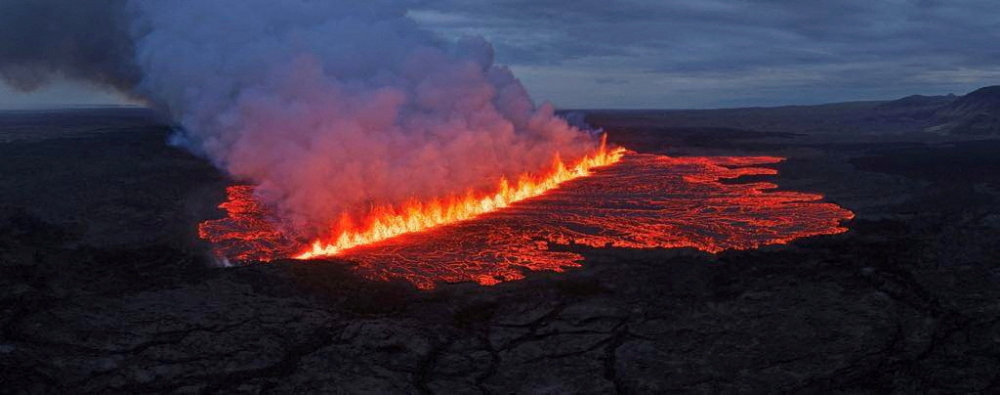
COPENHAGEN - A volcano erupted on Wednesday in southwest Iceland, authorities said, with live media images showing it belched smoke and dramatic flows of glowing hot yellow and orange lava, the latest in a series of outbreaks near the capital in recent years.
Often referred to as a land of ice and fire, the North Atlantic island nation with its many glaciers and volcanoes has now experienced a dozen eruptions since geological systems on its Reykjanes peninsula reactivated in 2021.
Magma forced through the earth's crust opened a massive fissure of length between 700 m and 1,000 m, Iceland's meteorological office said, with the first signs of the eruption giving scant warning.
"(It does) not threaten any infrastructure at this time," the office said in a statement. "Based on GPS measurements and deformation signals, it is likely that this was a relatively small eruption."
Flights at Keflavik airport in the capital of Reykjavik were not affected, its web page showed.
ALSO READ: Volcanic magma eruption begins in Iceland, meteorological office says
Public broadcaster RUV said people had been evacuated from the Blue Lagoon, a luxury geothermal spa resort, and the nearby town of Grindavik, citing police.
Grindavik, home to nearly 4,000 before an evacuation order in 2023, has stayed mostly deserted since, for fear of the periodic threat from lava flows and related earthquakes.
The Reykjanes eruptions have not yet posed a threat to Reykjavik, nor ejected large volumes of ash into the stratosphere, so air traffic has not been disrupted.
Experts have said the eruptions in the area could recur for decades, or even centuries.
READ MORE: Iceland volcano erupts for the tenth time in three years, no disruptions
The fissure eruptions, as the outbreaks are known, are characterized by lava flows emerging from long cracks, rather than from a central crater.


